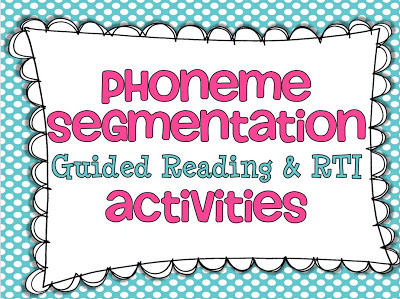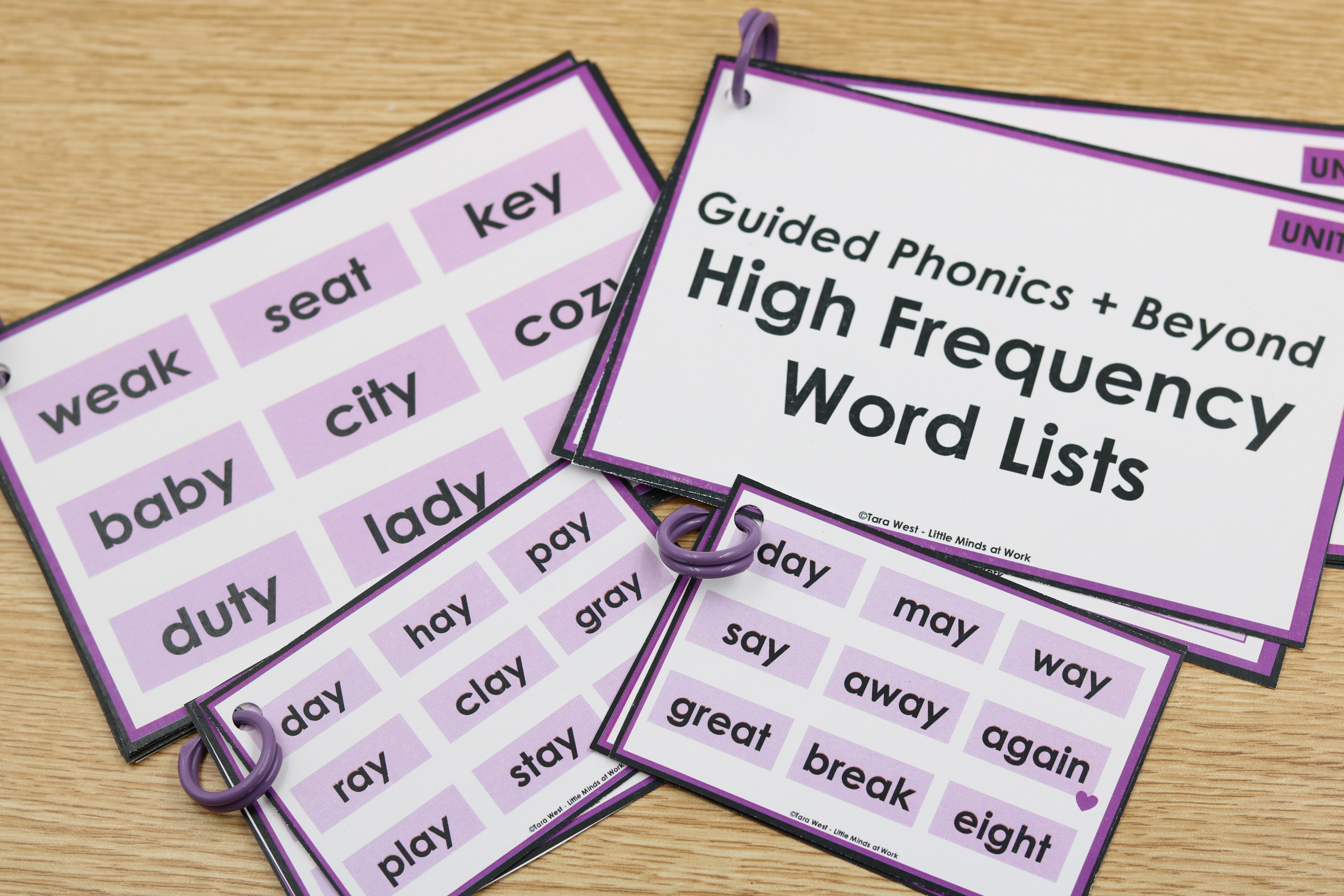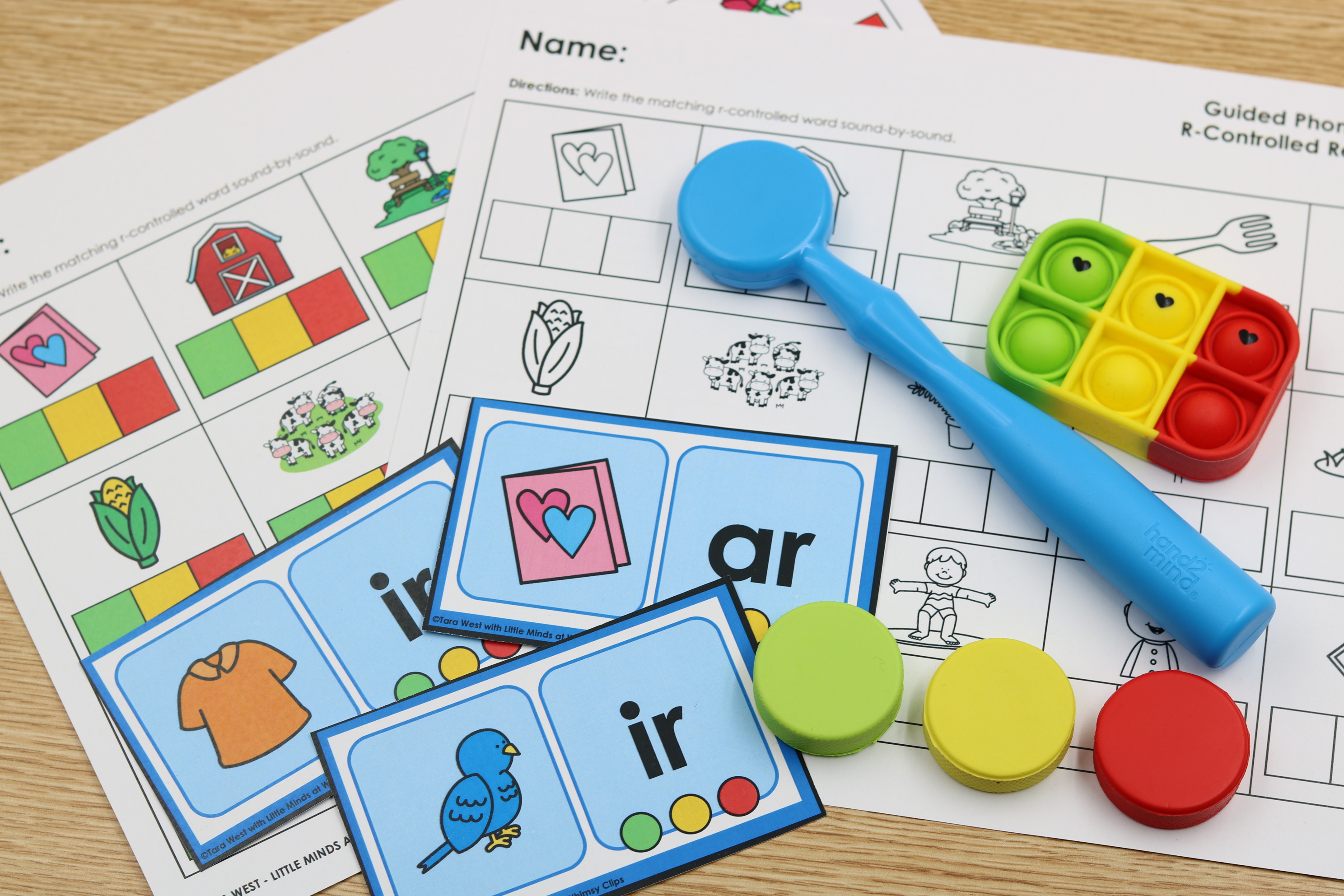Hello, passionate educators and literacy leaders! As you know, phonics instruction is...
Segmenting words into individual sounds is critical for successful decoding!
Phoneme segmentation is a skill that we see students usually have or don’t have. As the school year winds down 75% of my class can stretch, blend, isolate, and manipulate sounds fluently. However, for those that are not able to I am working with daily. We meet at our Guided Reading group and work about 10-15 minutes on just phoneme awareness. Some of our activities are more hands on and could be considered more phonological awareness, but we work strictly on hearing the sounds in the words.
Phoneme
segmentation is a technique
for building phonemic awareness in which students break words into sounds-
– saying
each sound separately as they stretch out the word. Ie.
Teacher asks, “How many
sounds are there in the word frog?” Students says, “/f/ /r/ /o/
/g/….4 sounds!”
Do you ever wonder what your little ones should actually be capable of at their age level?
By the age of 4 a student should be able to produce and enjoy rhyme & alliteration.
By the age of 5 a student should be able recognize a word within a word list that does not rhyme of the odd one out (dog, frog, cat). The student should also be able to recognize phonemic changes in words and hear syllables within words.
By the age of 5 1/2 a student should be able to distinguish and remember separate phonemes within a series, blend onset and rimes (what’s this word, c-at), and segment initial sounds (say the first sound you hear in sock).
By the age of 6 a student should be able to complete syllable deletion (rhino, now say it without /rhi/), compound word deletion (starfish, now say it without star), onset-rime blending, and phoneme segmentation.
By the age of 6 1/2 a student should be able to complete phoneme segmentation up to 3-4 phonemes (say slowly and hear all of the sounds c-a-t), and complete phoneme substitution (cat, change the first sound to /p/, what’s the new word).
By the age of 7 a student should be able to complete sound deletion in the initial and final position (Say cat. Now say it without the /c/).
By the age of 8 a student should be able to complete sound deletion in the initial position and including blends (Say think. Now say it without the /th/).
By the age of 9 a student should be able to complete sound deletion in the medial and final position and including blends (Say snail. Now say it without the /n/).
Click Below to this previous post:
Phonemic Awareness and Phonics 1.01.
Most of my students can stretch CVC words just fine, but they have difficulty with blends and basically any word other than the CVC’s. I have worked hard to establish a set of activities that DO work! However, phoneme segmentation is very hard for some students- – those with speech articulation errors, difficulty with phonological processing, and so on. That is why this is something we work on daily in my classroom!
Phoneme Segmentation within my classroom day:
Morning Routine: We work on stretching and blending words as a group. I give a word, the students then stretch the word and blend it back together. It looks like this:
Teacher- -“river”
Students: “/r/ /i/ /v/ /er/” …..”river”
I have my students stretch each sound on their fingers as if they are counting…the students then make a fist at the end of stretching the word and bring the fist to their chest as they blend the word back together.
Hallway: I also access phoneme segmentation in the hallway as I am having my students go into the restroom. I will show them a word and they will stretch and blend the word.
The little set of picture cards are what I have the students stretch. This set of cards has a variety- – CVC words, blends, & digraphs. The larger set the students says the word, “map,” stretches the word, “/m/ /a/ /p/,” and then blends the word back together, “map!”
Both sets of these cards are available in the packet listed at the end of the post!
Guided Reading: From the beginning of the school year to mid-year I have about a 5-10 minute block of time that is strictly for phonemic awareness in my guided reading groups. However, after mid-year most of my medium-high groups have mastered the skill and we move on to more higher level skills. For those that have not mastered I have continued a 10 minute block of time in our daily guided reading group meet up time!
Below are several pictures of my kiddos working on their phoneme segmentation/phonological skills!
Sound Boxes
Guided Sound Boxes
Stretching words with Slinkys
Drive the sounds the of the word on the highway…./c/ /a/ /t/, cat
Phoneme Segmentation fluency mats.
Phoneme Segmentation 3 in a Row!
All of these activities can be found in my Phoneme Segmentation packet!
In this packet you will find activities that incorporate phoneme segmentation in more of a “hands on” way. These activities can be used during small group time {guided reading, RTI} or use these activities whole-class!
Inside the packet:
Pages 3-89 Sound Boxes with Guided Picture {Color/B&W versions}
Pages 90-95 Stretching Sounds on the Highway
Pages 96-102 Blank Sound Boxes {multiple versions}
Pages 103-108 Phoneme Segmentation Cards
Pages 108-114 Onset & Rime Cards
Pages 115-123 Phoneme Segmentation Stretchers
Pages 124-146 Phoneme Segmentation 3-in-a-row {3 versions}
Pages 147-151 Phoneme Segmentation Fluency Sheets
Pages 152-153 Phoneme Segmentation Daily Routine & Word List
Click below to view a preview of the packet!
The packet is 155 pages and sells for $8 in my TpT store! Click {HERE}
Click below to grab a freebie set of PSF cards!
Have a great evening/day friends 🙂




